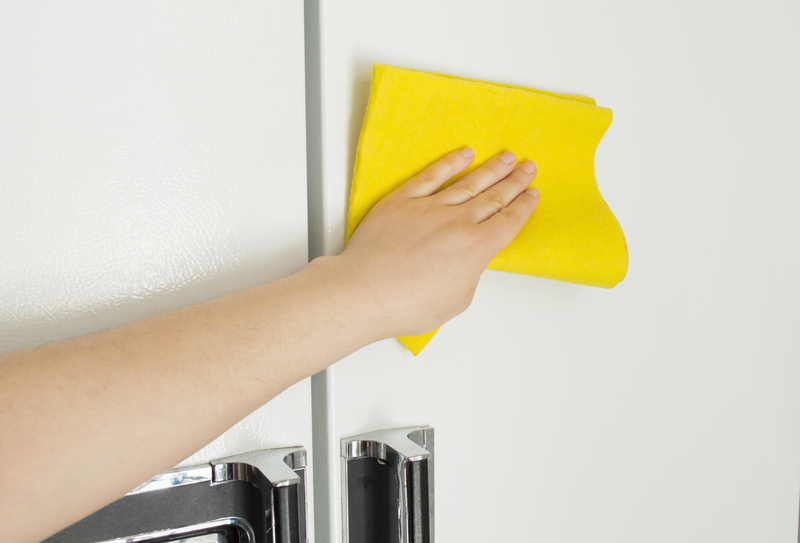Green Strategies for Office Maintenance
Posted on 25/03/2025
In today's world, sustainability is more critical than ever. Businesses are increasingly recognizing the importance of implementing environmentally-friendly practices, not just for the sake of compliance, but as a commitment to the global ecosystem. One significant area where companies can make a huge impact is office maintenance. By adopting green strategies for office maintenance, organizations can reduce their environmental footprint, save costs, and promote a healthier workplace.
Understanding Green Office Maintenance
Green office maintenance involves implementing practices and utilizing products that are environmentally responsible and resource-efficient throughout a building's lifecycle. This includes construction, renovation, operation, and demolition stages. The main aim is to create an office environment that minimizes waste, conserves energy, and reduces water usage.

Benefits of Green Office Maintenance
Adopting green maintenance strategies offers a myriad of benefits. These include:
1. Cost Savings: Sustainable practices often lead to significant savings in energy, water, and waste disposal costs.
2. Healthier Workplace: Green cleaning products and maintenance practices improve indoor air quality, leading to healthier, more productive employees.
3. Environmental Impact: Reduced carbon footprint and conservation of natural resources help protect our planet for future generations.
Energy Efficiency
One of the cornerstones of green office maintenance is energy efficiency. This involves both behavior changes and investments in energy-efficient technologies.
Lighting
Switching to LED lighting is one of the simplest and most effective ways to reduce energy consumption. LEDs use up to 75% less energy than incandescent bulbs and last significantly longer.
Smart Thermostats
Installing smart thermostats can optimize heating and cooling schedules based on occupancy and time of day, leading to significant energy savings.
Energy Audits
Conducting an energy audit helps identify where energy is being wasted and provides targeted recommendations for improvements.
Water Conservation
Water is a precious resource, and conserving it should be a priority in any green office maintenance plan.
Low-Flow Fixtures
Installing low-flow faucets, toilets, and urinals can drastically reduce water usage in the office.
Water-Efficient Landscaping
For offices with outdoor spaces, opting for native plants and xeriscaping can reduce the need for irrigation.
Leak Detection
Regular checks for leaks in plumbing systems can prevent water waste and potential damage to the office infrastructure.
Waste Reduction
Waste reduction strategies not only lessen the environmental burden but also often lead to financial savings.
Recycling Programs
Setting up a comprehensive recycling program for paper, plastics, metals, and e-waste can greatly reduce the amount of waste sent to landfills.
Composting
Introducing compost bins for organic waste such as food scraps can lower waste disposal costs and result in nutrient-rich compost for plants.
Paper Reduction
Promoting a paperless office by using digital documents and communications wherever possible can save money and reduce the demand for paper production.
Green Cleaning
Traditional cleaning products can contain harmful chemicals that affect indoor air quality. Green cleaning methods use environmentally-friendly products and techniques.
Eco-Friendly Products
Using biodegradable and non-toxic cleaning products minimizes the release of harmful chemicals into the environment.
Reusable Cleaning Supplies
Microfiber cloths and mops can be washed and reused multiple times, reducing the need for disposable cleaning materials.
Proper Storage
Storing cleaning products properly ensures that there are no leaks or spills that could harm the environment or the health of office workers.
Indoor Air Quality
Indoor air quality plays a significant role in the health and productivity of employees. Maintaining high-quality indoor air involves several strategies.
Ventilation
Proper ventilation systems that regularly circulate fresh air improve indoor air quality. Ensure HVAC systems are well-maintained and filters are replaced regularly.
Indoor Plants
Adding plants to the office space can naturally purify the air by absorbing pollutants and producing oxygen.
Low-VOC Products
Using low-VOC (volatile organic compounds) paints, sealants, and furnishings reduces the amount of harmful chemicals in the air.
Sustainable Materials
Choosing sustainable materials for office maintenance and construction is another critical aspect of green strategies.
Recycled Materials
Opt for furniture, flooring, and building materials made from recycled or reclaimed materials. This reduces the demand for new raw materials and lessens environmental impact.
Certifications
Look for products that are certified by reputable organizations, such as LEED, Green Seal, or ENERGY STAR, to ensure they meet high environmental standards.
Employee Involvement
The success of green office maintenance strategies largely depends on the participation of employees.
Education and Training
Regular training sessions to educate employees about the importance of sustainability and how they can contribute are essential.
Green Teams
Forming a green team that focuses on identifying and implementing new sustainability initiatives can lead to continuous improvement.
Incentives
Encouraging green behaviors through rewards and recognition can motivate employees to participate actively in sustainability efforts.

Measuring Success
To ensure that green maintenance strategies are effective, it is crucial to measure and track progress.
Regular Audits
Conducting regular audits of energy usage, water consumption, and waste production can help identify areas for improvement and measure the success of implemented strategies.
Setting Goals
Establishing clear, achievable sustainability goals provides direction and motivation for the entire organization.
Reporting and Transparency
Sharing progress and achievements with employees, stakeholders, and the public fosters a culture of accountability and continuous improvement.
Conclusion
Implementing green strategies for office maintenance is not just about compliance or public image. It's a commitment to creating a sustainable future. By incorporating energy-efficient practices, conserving water, reducing waste, using green cleaning products, and involving employees in sustainability efforts, organizations can make a significant impact. The benefits of these practices extend beyond the environment, leading to financial savings, healthier workplaces, and a stronger corporate reputation. Sustainable office maintenance is a win-win for businesses and the planet.
By taking deliberate steps towards sustainability, companies can lead by example and inspire others to follow suit in the journey towards a greener, more sustainable future.






